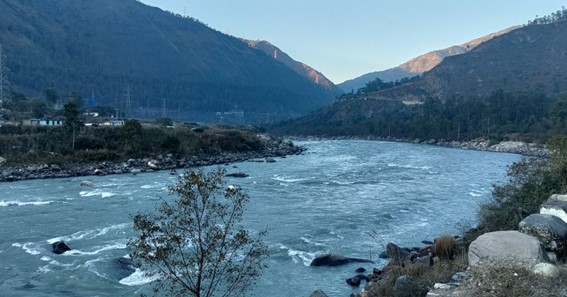Are you curious to know what is antecedent river? You have come to the right place as I am going to tell you everything about antecedent river in a very simple explanation. Without further discussion let’s begin to know what is antecedent river?
Antecedent rivers are a fascinating phenomenon in the field of geology. These rivers are unique in that they existed before the landscape around them was formed, rather than being formed by the landscape itself. In this blog post, we’ll explore what an antecedent river is, how it’s formed, and some examples of antecedent rivers around the world.
What Is Antecedent River?
An antecedent river is a river that existed before the landscape around it was formed. These rivers are able to maintain their course and flow even as the surrounding landscape changes due to tectonic activity, erosion, or other natural processes. This means that an antecedent river may cut through mountains, canyons, or other features that were not present when the river was first formed.
How Is An Antecedent River Formed?
Antecedent rivers are typically formed in areas where tectonic activity is high. As mountains or other landforms are uplifted, the rivers that flow through these areas may continue to flow along their original course, even as the landscape around them changes. This can result in a river cutting through mountains or other landforms, creating canyons or gorges that are several hundred feet deep.
Another way that antecedent rivers can form is through erosion. In some cases, a river may cut through a soft layer of rock or sediment, while the surrounding landscape is composed of harder rock. Over time, the river may erode away the softer rock, creating a channel that remains even as the surrounding landscape is eroded away.
Examples Of Antecedent Rivers
One of the most famous examples of an antecedent river is the Indus River in Pakistan. The Indus River flows through the Himalayan Mountains, which are still actively rising due to tectonic activity. Despite the changing landscape, the Indus River has maintained its course and flow for millions of years, cutting through mountains and creating deep gorges and canyons.
Another example of an antecedent river is the Colorado River in the United States. The Colorado River flows through the Grand Canyon, which was formed over millions of years through a combination of erosion and tectonic activity. However, the Colorado River itself is actually older than the Grand Canyon, having existed for millions of years before the landscape around it was formed.
Conclusion
In conclusion, an antecedent river is a river that existed before the landscape around it was formed. These rivers are able to maintain their course and flow even as the surrounding landscape changes due to tectonic activity, erosion, or other natural processes. Examples of antecedent rivers include the Indus River in Pakistan and the Colorado River in the United States. The study of antecedent rivers can provide valuable insights into the geological history of an area, as well as the processes that shape our planet over time.
FAQ
Which Is An Antecedent River?
Examples. Many Himalayan rivers are good examples of antecedent origin. These rivers originated well before the Himalayan region was uplifted. The rivers Indus, Brahmaputra, Sutlej, Kosi, and Subansiri originated on the Tibetan side and now traverse the existing mountain ranges, cutting deep gorges.
What Is An Antecedent River In Simple Words?
The rivers that existed before the upheaval of the Himalayas are known as the antecedent rivers and cut their courses southward by building gorges in the mountains. An antecedent stream is a stream that, considering the changes in the underlying rock topography, retains its original course and pattern.
What Is Antecedent River Upsc?
Antecedent Drainage –
A part of a river slope and the surrounding area gets uplifted and the river sticks to its original slope, cutting through the uplifted portion like a saw forming deep gorges like [Vertical erosion or Vertical down cutting].
Why Indus Is Called Antecedent River?
Indus is an antecedent river, meaning that it existed before the Himalayas and entrenched itself while they were rising.
I Have Covered All The Following Queries And Topics In The Above Article
What Is Antecedent River
What Is An Antecedent River
What Is The Meaning Of Antecedent River
Antecedent River India
Kosi Is Antecedent River
Antecedent Drainage
Antecedent River Vs Consequent River
Non Antecedent Rivers In India
Is Ganga Antecedent River
Antecedent River Name
Superimposed River
What Is Antecedent River
